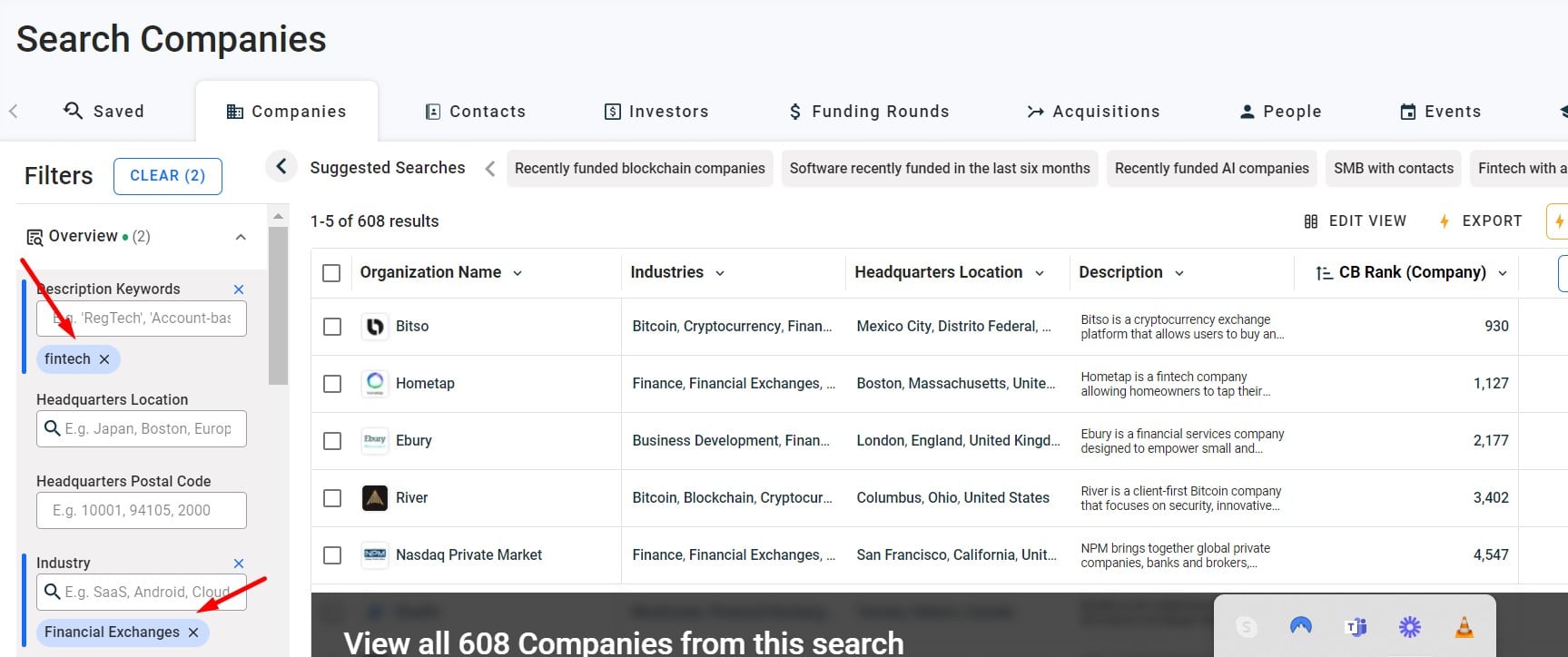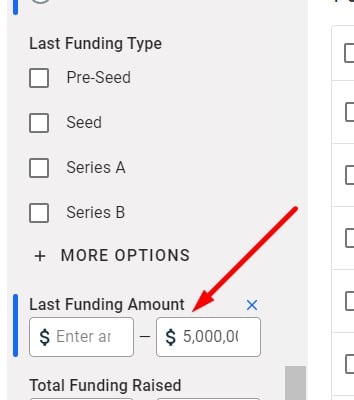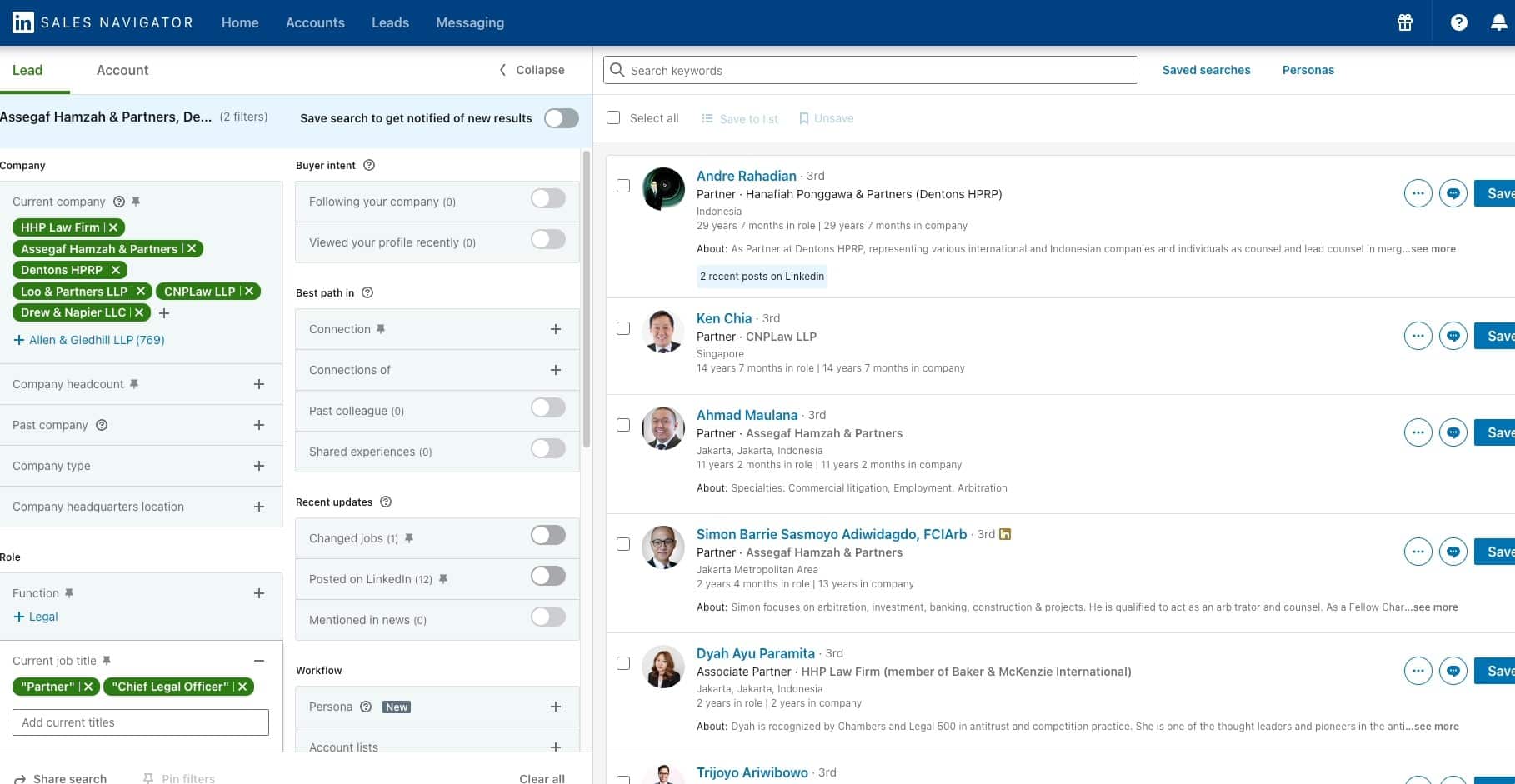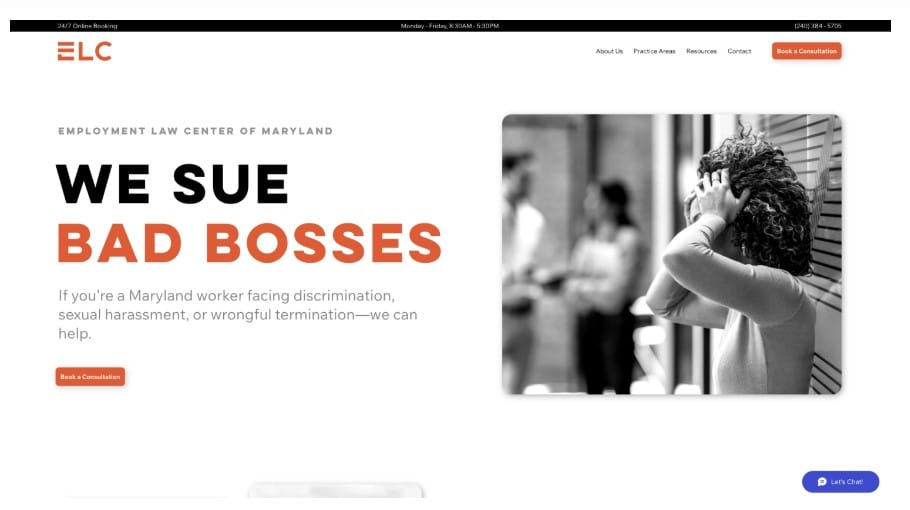There are approximately 450,000 law firms in America, according to Statista.
Which means that your law firm is probably facing a ton of competition. How do you find high-quality prospects before your competitors snatch them away?
Well, you have two choices:
Either hire a company that specializes in lead generation services for lawyers or do it yourself.
In this article, we will share some of the top proven lead generation strategies agencies use to find leads for lawyers, which you can either implement yourself; Or you could hop on a free 15-minute strategy session with Salesbread, and we can help you find qualified leads.
You have to understand your target audience.
You need to understand your target audience first, before coming up with an effective strategy.
Right off the bat, if you’re trying to sell personal injury protection to consumers, it’s a really bad idea to do sales outreach.
As a lead gen expert, I can’t imagine that working well, and this is why we see billboards advertising personal injury protection instead.

(Image courtesy of the Sterling Firm)
But if you are a law firm that is typically working with other businesses, such as:
- Corporate
- Patent
- Tax
- Real estate
That’s where your start is… Understanding WHO your clients are, and what services they are interested in.
Then you need to find out which companies are likely struggling with an area of law that you can help them with.
For example, we had a patent attorney client; And he knew that well-funded startups in particular segments, were very likely to have a need for filing a patent, or eventually (due to the tech that they were developing) there would come a time when they would have to file a patent.
Why?
Because it would be in their best interest.
Look at who has purchased your legal services in the past 6 months
For example, with the client that we mentioned above, it was easy to figure out who their ideal prospects were.
Why?
Because they looked back at the start-ups they had been working with in the past. There were only a handful at the time, but this helped us, at Salesbread, identify which industries would likely be a hotbed for needing patents.
So, you could do the same.
Look at which industries have worked with you in the past.
What do all these industries or legal clients have in common?
- Are they located in the same area?
- Do they have the same pain points?
- How big are these companies? Less than 50 employees or more?
- Have they recently been funded?
- Are they start-up’s or have these companies been around for a few years?
It’s so important to take a look at which businesses need your services, and if there was any visible signal that you can detect when your client was looking for your services.
For example, if you’re doing tax law, did your client just hire a new CFO to manage certain aspects of their finances? Or if you notice that these companies are experiencing growth, they might be hiring a tax attorney to assist with structuring profit share or pension plans.
This could be a clear indication that they are opening up a budget for specific law services.
(Below is an example of how we would analyze data to build a list)
If you know exactly who your ideal clients are, it will also help you to figure out how to reach them.
Would sales outreach work? Or would billboards be a better option? Should you use social media or Google ads?
Think about where your ideal customers spend most of their time in the digital space.
For example, if you know that many spend time on LinkedIn, it wouldn’t make sense to start a TikTok campaign.
Knowing exactly who to target allows you to come up with effective strategies.
Build a list of prospects
So once you know exactly WHO you’re targeting, you can use specific lead generation tools, like Crunchbase to build a list of companies to go after.
For example, with the patent attorney client, we went to Crunchbase and downloaded a list of startups that had $5 million up in funding, and we filtered it by certain verticals to help us make sure that they were building technology that could be patented.
Below is an example of how we used Crunchbase to help us find startups with specific criteria.




Remember it is also really important to filter your list. We actually use 34 different filters to get your list perfect.
This article shares what some of these filters are: 34 Filters To Find Your Target Accounts
Use LinkedIn Sales Navigator to find the right people
Once your list is perfect, you can then use LinkedIn Sales Navigator to find the right people to reach out to at your target accounts.
For example, if you noticed that all the decision makers were founders, you will then need to search for the founders of these companies through LinkedIn.

PRO TIP: Filter your list through your 2nd-degree connections. Stats have shown that when you reach out to someone in your second-degree network, they will be more likely to accept your connection request.
Focus on your messaging during outreach
If you do decide to use cold email or LinkedIn as a channel for your outreach, don’t just say:
“We want to sell you patent services.”
Sleazy sales pitches don’t work.
Instead, offer value to your prospective clients by offering to share insights that might appeal to them.
For example, with the patent attorney client that we mentioned above, we offered to share insights on what their competitors were doing, with regard to filing patents.
As a lawyer or an attorney, think about: “What can you offer your prospective clients that would be of value to them.” Another example is of a real estate law firm, who might offer free lectures, webinars, or a guide on the current law trends in real estate for realtors.
Just remember though, you have to be transparent.
Even from the first message you send. Let your prospects know about the service you offer. You don’t want to trick them into hopping on a call only to sell them something.
These CEOs and founders need to know what’s around the corner; There shouldn’t be any confusion as to what you are selling.
But it’s important to lead with value in your outreach messages so that even if the prospect isn’t in the market yet for your services, it still warrants a conversation around your services and how you could help solve their pain points.
Always use personalization
For your outreach campaign to be a success, always use a personalized intro. This means that you actually have to research your prospects and find something specific to mention about them in your messaging.
It’s really hard to break through everybody’s spam filter now that there are so many salespeople using LinkedIn incorrectly.
If you’re a CEO who’s making 2 million dollars a year, you’re not going to pay attention to messages that feel automated.
At Salesbread we do add lots of manual personalization.
We don’t use AI for this.
People are excited about ChatGTP, but a bot can’t match an actual human-curated message.
Humans are still better at finding unique ways to talk about each prospect in a way that makes people feel valued when well-researched on this outreach.
Here are some personalized LinkedIn connection request templates to use for inspiration.
Lead generation for lawyers case study
Jack is an incredibly talented lead generator. We’ve worked with several outside consultants, and Jack was by far and away the best person we’ve worked with.
He is, first and foremost, a fantastic listener. He really dug into the specifics of our business, and made insightful recommendations.
Moreover, he has a wonderful writing voice. He is able to convey a friendly and a professional tone at the same time. I was really worried about having our marketing material read like a pushy sales copy. But Jack quickly alleviated those fears. He is able to push all the right button without sounding cheesy or sales-y.
I highly, highly recommend him.
We thought we would share a case study of how we helped a patent attorney law firm reach out to well-funded startups in the Bay Area and other tech hubs in the country, such as New York and Austin.
We mentioned some aspects of the campaign above, but we would like to share a little more details on how we helped them find monthly leads.
They wanted us to target the following prospects:
U.S. Startups Funded over $5MM in Revenue — In specific (undisclosed) industries likely needing patent services.
We wanted to reach out to:
- Founders
- Co-Founders
- CEOs
We worked with this firm for 9 months and generated 217 exclusive leads.
That’s 24.3 leads a month, which is over our lead per-day promise to our clients.
Our total reply rate was 21.8%.
Here are some replies that we received
(Please note we have taken names and contact details out to uphold the privacy of our clients and prospects.)
1. “Hi, I usually don’t really respond to LinkedIn messages but I’ll give it to you, your approach is better than 99% of everyone else’s. I’m extremely booked this week. Could put something on the calendar for next week? How’s your schedule next Thursday or Friday?”
2. “Sure, I’d be delighted to learn your perspective. We will coordinate a time next week for a call.”
3. “Hey, I appreciate you trying to add value to my business. You can give me a call tomorrow afternoon. (xxxxx)”
4. “Hey. It’s a great niche and a compelling service you’ve developed. {XXX} is not my company, but I work with the founder & CEO. If I think the value/cost ratio makes sense, I’d pass along the info and suggest the CEO follow up with you. I do advise and work with other startups, one of whom is planning to file a process patent. The need may be greater for this startup.”
5. “Happy to chat, feel free to schedule a call here: (xxxx)”
Our entire campaign revolved around LinkedIn outreach, and we followed the same process mentioned above.
- Build an ultra-refined list of start-ups based on data
- Refine that list through lead generation tools, such as Crunchbase
- Find the right people to reach out to at these companies through LinkedIn Sales Navigator
- Send personalized connection request messages
- Follow up and ask for a booked meeting
This exact process helped us land 217 qualified leads for our client, and out of these leads 87 asked for a booked sales meeting.
This means 40% of these positive replies wanted to hop on a call ASAP to talk about their legal services.
If you would like the same results, why not hop on a free consultation with the founder of our lead generation service, Jack Reamer?
Email Marketing Campaigns
Email marketing is also a great way to keep nurturing potential clients. Perhaps if you try LinkedIn outreach, and some prospects mention that they aren’t in the market yet for your services, you could always ask to add them to your email list.
This is especially true if you are selling to businesses whose buying cycles might be 1 -2 years.
So you don’t want somebody who might be a great client for you to be disqualified, just because they aren’t interested in buying your services today.
This is why we have found so much success in starting conversations. As we mentioned above, by sharing competitor insights.
Bear in mind, if you do decide to do outreach and the prospect says: “This is great, I’d love to know more.”
You could always say: “Great, just to stay in touch, I’m here on LinkedIn, but would it be a bad idea to add you to an email newsletter that shares more insights in {{industry space}}?”
This is a great way to use email marketing to keep these leads warm so that they don’t forget about you; when there comes a time that they need your services, they will remember to get in contact with you.
What content should you share in your email marketing campaigns?
Think about what your ideal target audience is interested in right now, that overlaps with your expertise.
Some examples of content to share:
- New trends that you might be seeing in your industry space; whether it’s for patents, tax law, real estate, or tech space.
- Bite-size education topics that your audience will find valuable (Example: Here’s what Google did when they filed their first patent.)
- Case studies and helpful video content where you can share your expertise
If you can do this, then you can keep prospects warm and turn leads into clients with time.
Optimizing your website is also important for law firms

Optimizing your website is crucial for law firm marketing. Especially if you are looking to attract more clients and enhance their online presence.
By incorporating relevant keywords related to your legal services and location, you can improve your search engine rankings and drive more traffic to your site.
Additionally, optimizing your site for mobile devices and ensuring fast loading speeds can make it user-friendly and enhance the overall user experience.
Including informative and well-organized content, such as blog posts or case studies, can also showcase your expertise and build trust with potential clients.
The law firm in the image above has created its homepage in such a way that it offers their clients key information immediately.
It showcases testimonials from happy clients and provides links to their different practice areas. They have also clearly displayed the types of cases that they have managed and this effectively draws in qualified leads with an easy-to-access ‘Book a Consultation’ form.
The site also has a bold design that stands out and generous use of white space ensures easy navigation. There are also many resource buttons, which give clients extra details. Furthermore, the site also has blog posts that boost search engine optimization (SEO), thus, increasing traffic.
Content Marketing

Source: Main deterrents to hiring an attorney according to legal consumers in the United States and Canada in 2021, Statista
Content marketing takes time, but it can be an effective way of lead generation for law firms.
According to Hootsuite, 1 in 4 people won’t hire you without a recognizable web or social media presence.
This is why implementing a social media or web presence is important for brand awareness.
Implementing a Blogging Strategy
When you regularly post informative and engaging content, you’re not just sharing your expertise but you’re also building trust and showcasing your firm’s knowledge.
Start by identifying common questions or concerns your clients have. Write blog posts that address these issues, providing clear, actionable advice.
Think about what your ideal client would type into Google.
For example, a family law firm might write about the steps involved in filing for divorce or tips for co-parenting.

You could use tools such as Google Keyword Planner or Moz and find out which keyword would be ideal for that specific topic.
For example, you could then create a blog post around the topic “How to co-parent.”
As you can see above, this keyword has a decent amount of traffic and is informational to the reader.
In this article you can share your insights as a divorce firm, and how you can also help couples when coming up with a co-parenting plan.
This valuable content not only helps your audience but also boosts your website’s search engine ranking, making it easier for new clients to find you.
Consistency is key, so post regularly—whether that’s weekly, bi-weekly, or monthly.
Over time, your blog becomes a rich resource that positions your firm as an authority in your practice area.
Leveraging Social Media Marketing

Many law firms utilize social media. Facebook, Instagram, Twitter, LinkedIn and even Tik-Tok.
Think about where your clients spend most of their time and use those platforms to create a social media marketing strategy.
The goal here is to be present, active, and engaging.
Start by sharing your blog posts on social media.
Share news about your firm, celebrate wins, and post about any community involvement.
You can also use striking images and videos to make your posts more engaging—people love to see the faces behind the firm, so create a video that introduces your team, or share something interesting about new laws.
Responding to comments and messages also creates engagement, which is important. This shows that you’re not just a faceless entity but a group of real people who care about helping their clients.
You could also run targeted ads to reach specific demographics or geographic areas and use the analytics tools provided by the platforms to track what’s working and what’s not.
Remember, social media is about building relationships. If you’re consistent and genuine, legal leads will start to come in organically.
Networking and Referral Programs
Lawyers can boost their lead-generation efforts through strategic referral campaigns and networking.
If your firm can foster strong relationships with happy clients and professionals in industries that complement your services, attorneys can create a network of advocates or companies that can vouch for your expertise and reliability.
You could also offer lead magnets such as discounts on future services or free consultations for successful referrals. This can motivate clients to spread the word about your services.
Additionally, you could also win more leads by engaging in networking within legal and related industry circles.
Such as:
- Attending conferences
- Joining professional associations
- Participating in community events
- Hosting charity events
This can expand your firm’s reach and credibility.
Hire an agency that’s successfully done legal lead generation
Lastly, you don’t have to come up with a strategy on your own. If you lack the time and expertise, hire an agency that has successfully generated leads in the legal space.
As mentioned above Salesbread generated 217 high-quality leads for our patent attorney client. This means that their firm received more than 1 qualified sales lead per day.
If you would like to learn more about our service hop on a free 15-minute strategy session below with the founder of Salesbread.
